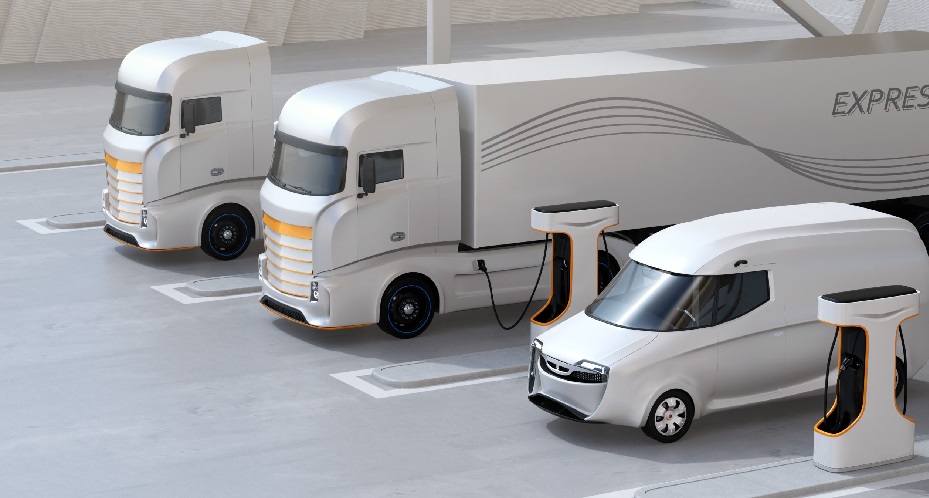K2 Mobility, a software company with its PANION product and based in Berlin, focuses on providing services to electric truck and bus fleet operators who face the challenge of integrating additional operational activities and processes that are related to electric vehicles into their operating models.
In a conversation with Mobility Portal Europe, Markus Kroeger, founder of K2 Mobility, mentions that their experience from working with clients like Amazon and ASKO, Norway‘s largest grocery wholesaler, has given them valuable insights into the daily challenges of electric heavy vehicle fleets over the last two years.

Why is this tight integration into core operations necessary?
“It is a prerequisite for the electrification of heavy transport. With Diesel vehicles, the question of ‘is this vehicle sufficiently fueled?’ never came up as stopping at a gas station took ten minutes” explains Kroeger.
Truck and bus operations are low margin businesses and have been optimized over the last decades to bring the total cost of ownership to an absolute minimum.
Tight tour schedules and a high truck asset utilization are therefore imperative.
“With electric units, you can only maintain that level of efficiency, if you fit charging-related activities into this tight schedule wherever you can,” indicates Kroeger.
“To be able to do that, you have to know and interpret the operational schedule and its changes in real time,” he adds.
IoT and Machine Learning: PANION’s key to profitable business operations
With a real-time integration, the PANION software “connects” to the fleet vehicles, the charging infrastructure, and the transport management system.
To better understand this solution, the CEO continues to discuss the work they do with ASKO, which has 14 distribution centers, delivers groceries to 1400 stores, and operates around 700 trucks, of which 140 are electric, with the potential to add another 80 units this year.
“PANION is connected to their transport management system, in real time. This way, we know each tour plan for each vehicle, including departure and arrival times, the route with its individual stops, the payload changes etc.” Kroeger points out.
Not only that, through the telemetry connection, the software knows the actual battery status and location of each truck at any given moment.
PANION also connects to the charging infrastructure as well as to the grid.
“The software assigns a spot for that vehicle at a particular charging point, for a set time, and communicate it to the driver or whoever needs to know,” he explains.
Moreover, using machine learning and data science approaches, PANION determines the right level of charge for the truck considering the tour ahead, the payload, the traffic conditions and so on.
Following the truck on the road using the telemetry signals allows the software to calculate projected time of arrival as well as the state of charge for the battery.
This way the upcoming charge plans can be adjusted, for instance, in case the inbound tour resulted in a higher consumption due to traffic conditions or incline weather.
“If you have two vehicles and two chargers, there’s no complexity and you can even plan it in your head. But if you have ten trucks, operations become more challenging,” acknowledges the CEO.
“Cost” as a decisive factor for opting for eTrucks
The European Parliament approved a law that will require almost all new trucks sold in 2040 to be zero-emission vehicles.
“These climate goals are very ambitious but necessary. However, considering there are few trucks on the roads and that the infrastructure is still in its early stages, they seem challenging to achieve,” Kroeger argues.
Nevertheless, he explains: “Especially in commercial transportation, the most important factor for significant paradigm shifts like this is cost.”
What’s the upside to this fact?
In certain countries, like Norway, “the total cost of ownership for truck transportation (as in cost per kilometer) is lower with battery electric vehicles than with diesel ones. And that includes the cost for the charging infrastructure as wells as for the grid connection.”
According to the CEO, the prices of trucks, batteries, and renewable energies will continue to decrease significantly.
“The total cost of ownership for battery electric transportation will be decisive for us as a society to meet these regulations and goals,” he asserts.
“E-trucks result already in lower cost per km for important use cases like grocery distribution in countries with road tolls and a certain level of e-truck subsidies. This cost advantage over Diesel truck-based transportation is bound to widen with CO2-emission costs rising and renewable energy production expanding,” he adds.
Which role will CPOSs play in the context of eTruck operations?
“In order for public charging to be an alternative for heavy vehicles, the truck
operator needs the ability to make a dynamic reservation,” the K2 Mobility CEO states.
“Dynamic means that if the truck gets stuck in traffic and will be 30 minutes late, they still need to be able to start their charging session immediately upon arrival. That requires the charge point operator to know about the delay and accommodate the reservation change,” Kroeger explains further.
He points out that an extra hour of wait time increases the cost of the tour by 200 or 300 euros.
“We believe that over the next three or four years, depot charging will play a more important role, especially for short and middle mile transport cases.”
How likely is it that road freight shipping firms will invest into their own private infrastructure?
“Not every company has the means or the motivation to do that,” Kroeger admits.
“It is also a question of power supply and the space at the depot. With an integrated charge planning system however, it is possible to share privately owned infrastructure with 3rd parties – so not every logistics operator has to buy their own.”
As a success story, Kroeger mentions the intense work they did for and with ASKO, through which they enabled the system for third parties to use their private hubs.
“They invested in charging infrastructure at their sites, but its utilization is naturally low because it’s designed for times when trucks return to the depot,” the CEO argues.
Indeed, during most of the day, the stations are hardly used, as truck operators make money when their trucks are on the road.
“So, they were interested in offering their neighbors, suppliers, and other companies the opportunity to consume energy at their infrastructure during times when there was availability,” he continues.
Consequently, the firm designed a plan to know when there was availability to manage third-party charging at ASKO’s stations.
Kroeger assures that a profitable business can be created by selling kilowatts.
“We enable charging processes, allocate the amount of energy consumed by each truck and company, and return it to our customer,” he explains.
These types of projects drive the development of electromobility, as “without shared private infrastructure, it would take too long.”








